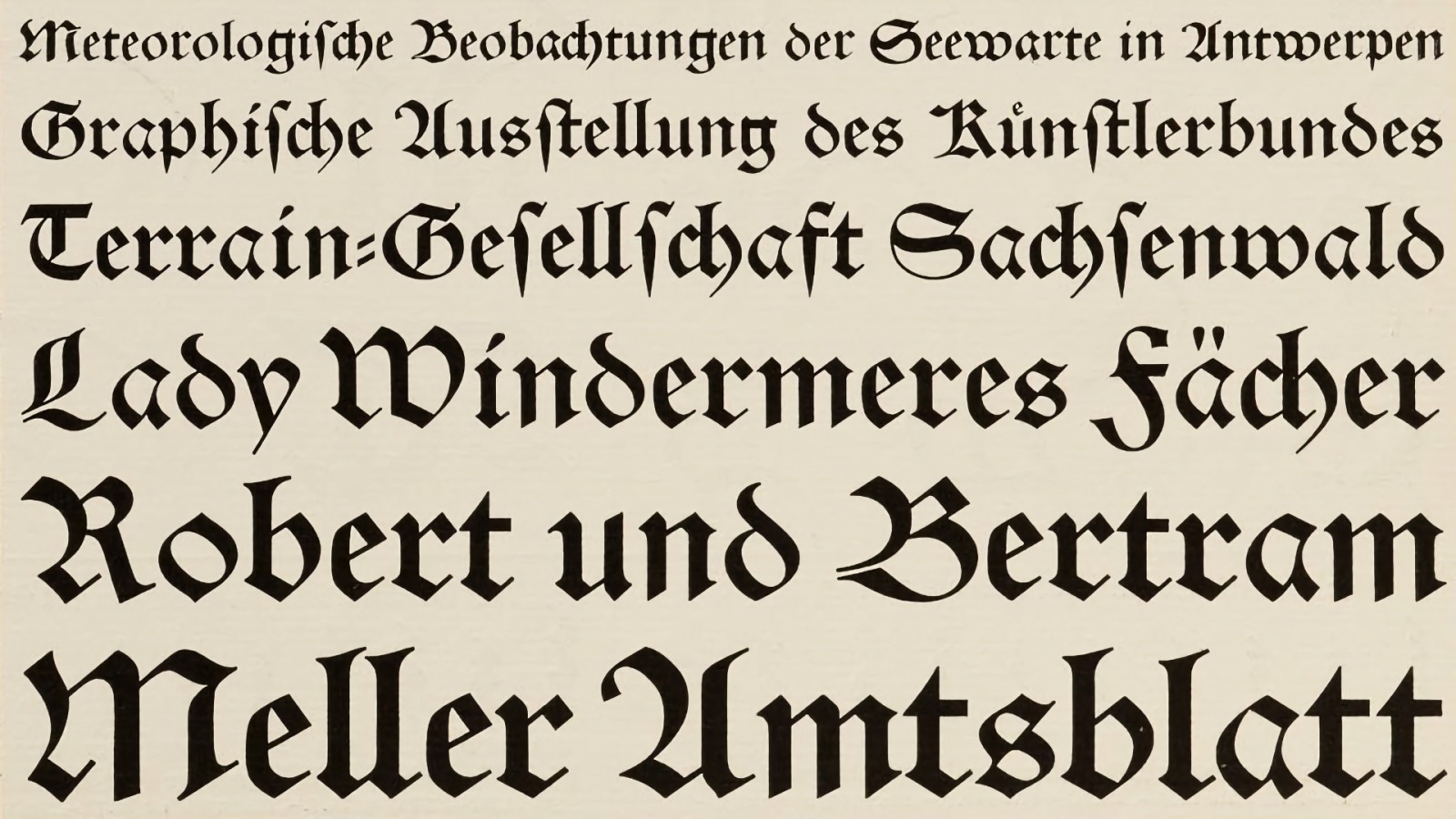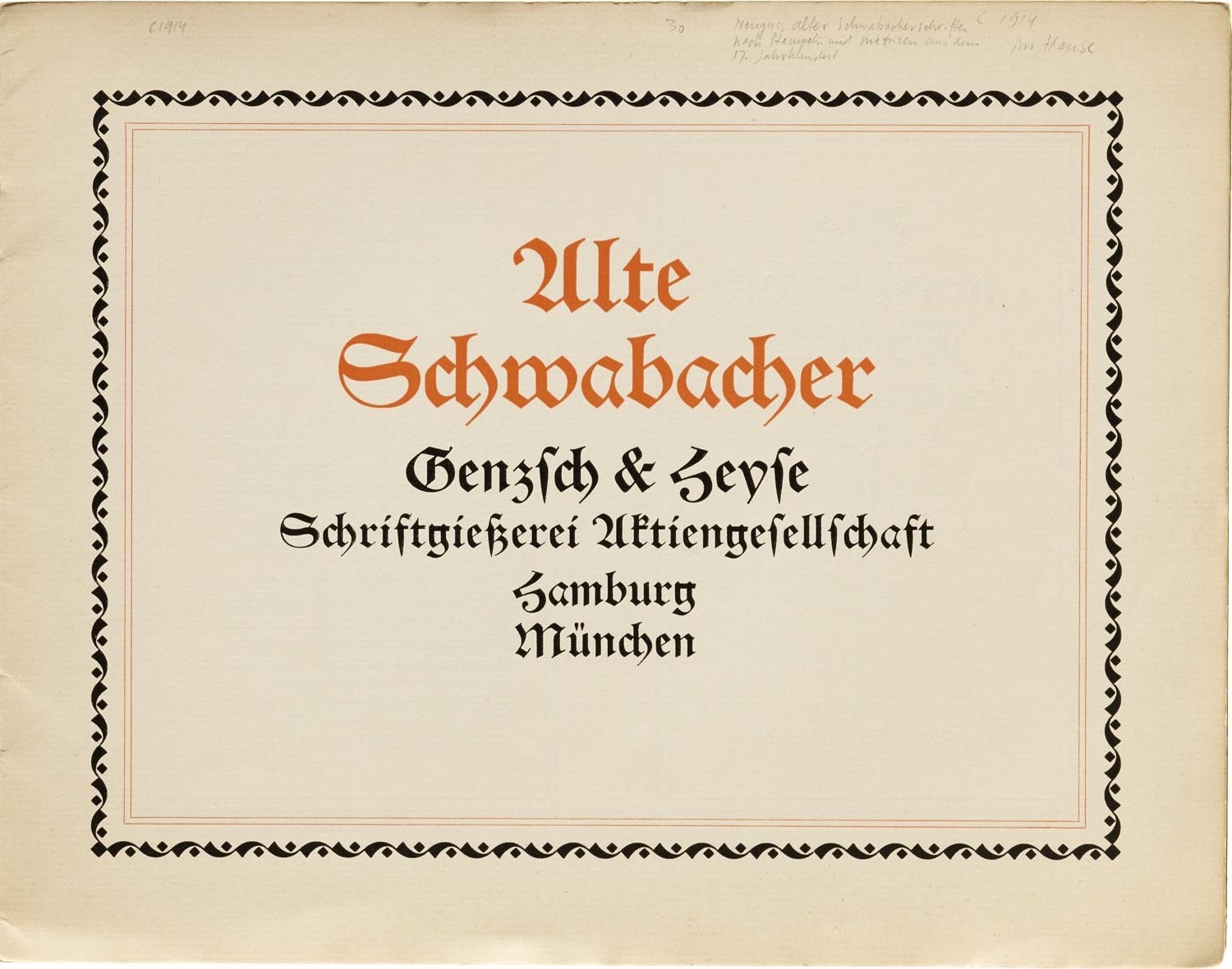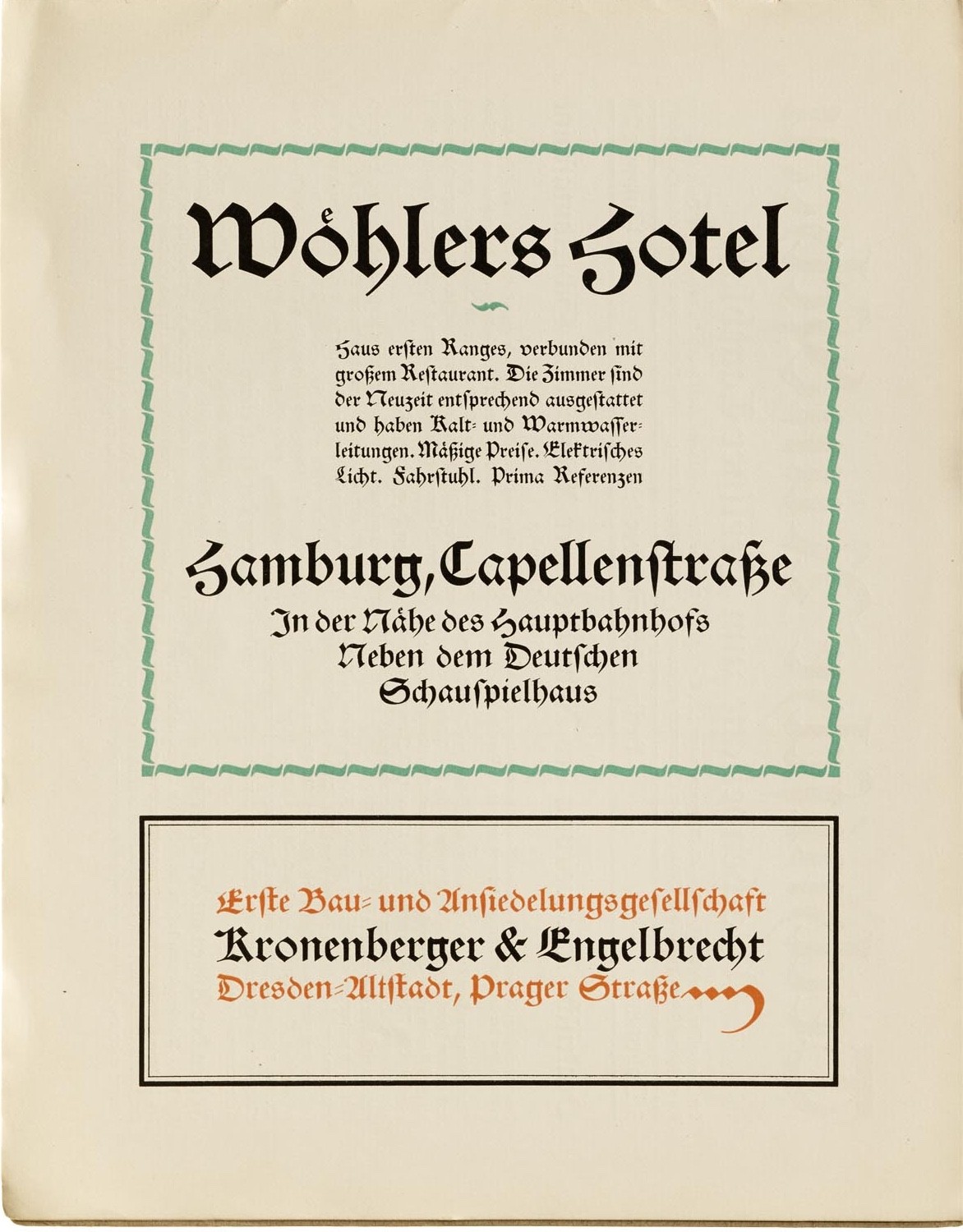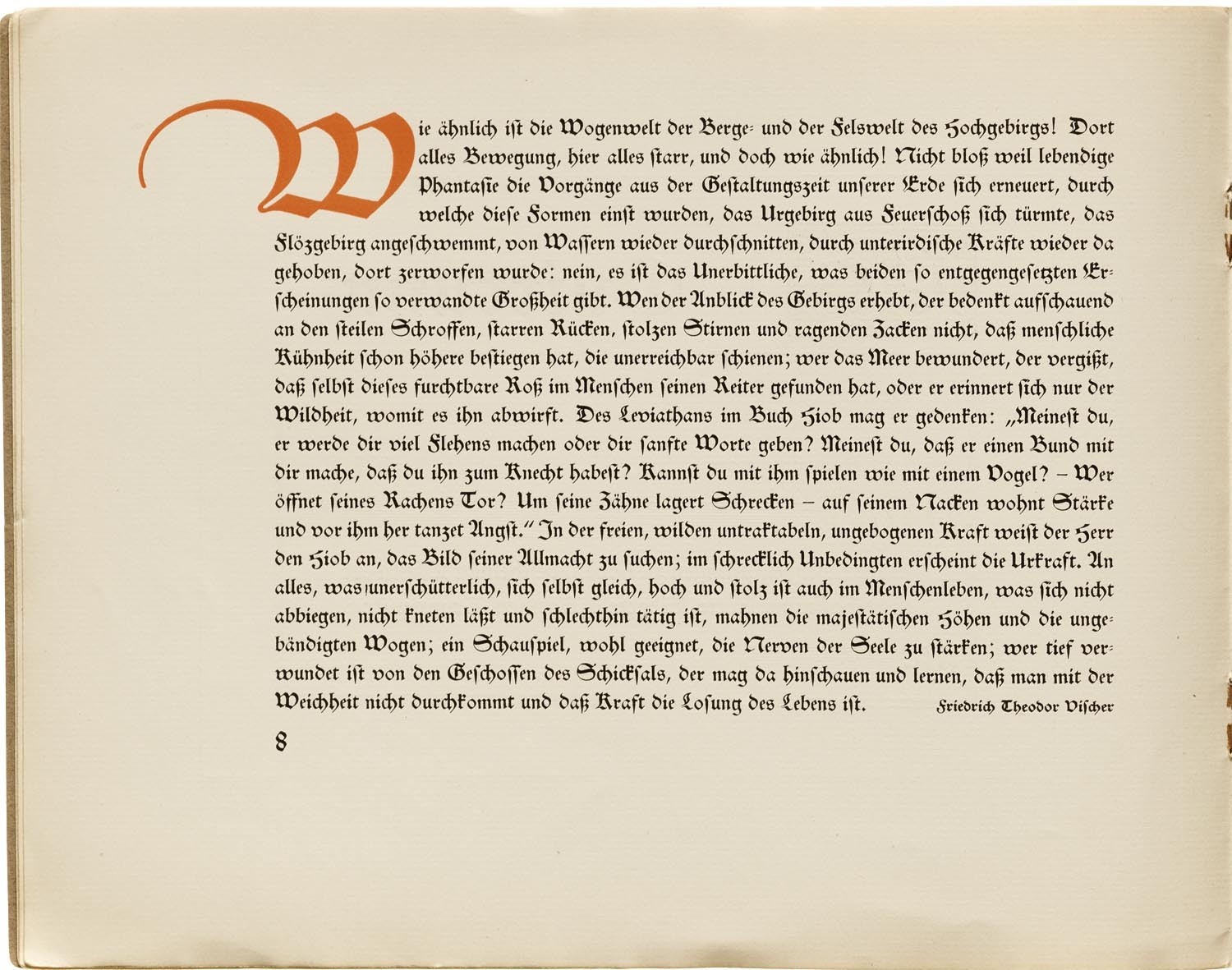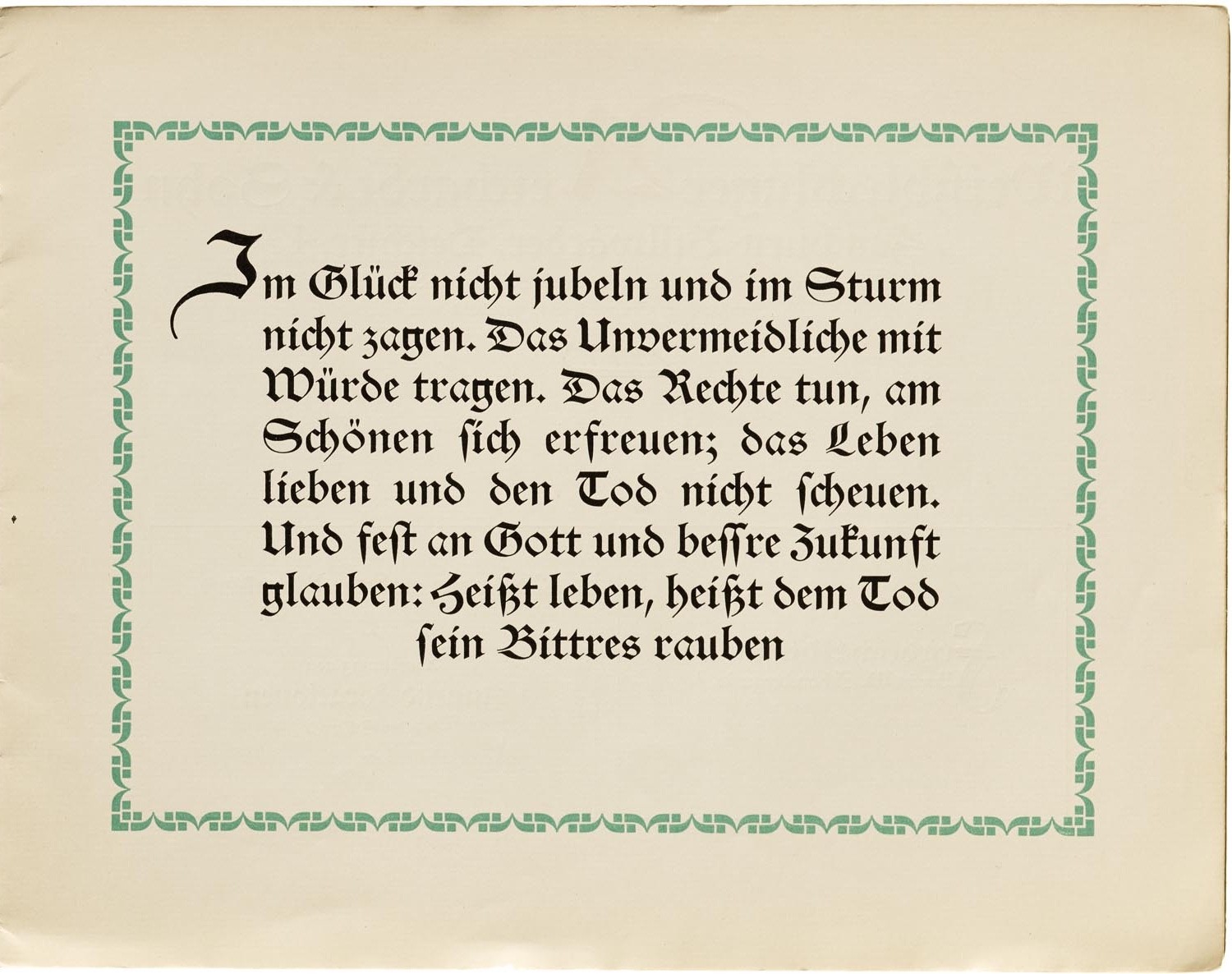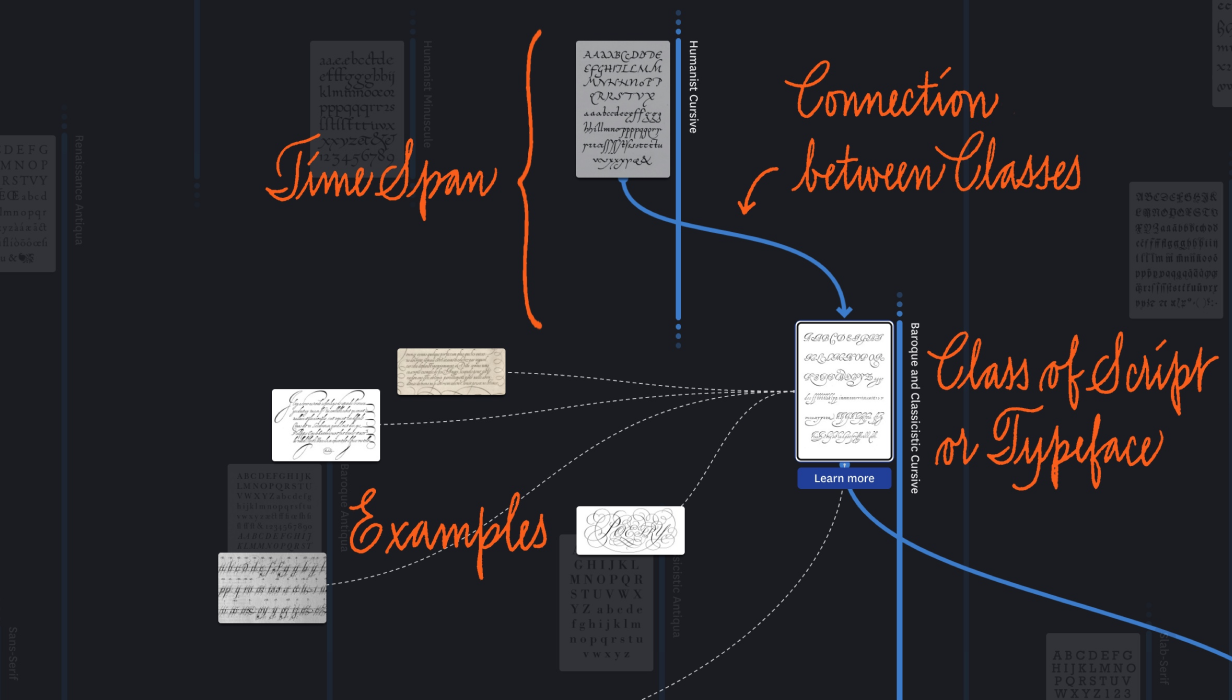
Archaic Latin
Learn moreCapitalis Monumentalis
Learn moreRustic Capitals
Learn moreRoman Cursive
Learn moreCapitalis Quadrata
Learn moreMedieval Regional Scripts
Learn moreUncial script
Learn moreHalf-Uncial
Learn moreCarolingian Minuscule
Learn moreGothic Majuscule
Learn moreEarly Gothic Minuscule
Learn moreRotunda
Learn moreTextura
Learn moreGothic Cursive Script
Learn moreBastarda
Learn moreHumanist Minuscule
Learn moreHumanist Cursive
Learn moreRenaissance Antiqua
Learn moreFraktur
Learn moreBaroque and Classicistic Cursive
Learn moreBaroque Antiqua
Learn moreClassicistic Antiqua
Learn moreSans-Serif
Learn moreSlab-Serif
Learn moreModern Handwriting Scripts
Learn moreFibula Praenestina
Learn more →Forum-Cippus
Learn more →Roman Monumental Script (concave transitional form)
Learn more →Roman Monumental Script
Learn more →Early roman Majuscule Cursive
Learn more →Classic Roman Cursive
Learn more →Roman Monumental Script (transitional form)
Learn more →Classic Capitalis
Learn more →Roman documentary script from Pompeii
Learn more →Classical Roman Document Cursive
Learn more →Love verse in Roman cursive
Learn more →Scriptura Actuaria from Pompeii
Learn more →Capitalis Monumentalis from the Trajan Column
Learn more →Roman Classical Cursive of a papyrus document
Learn more →Roman Uncial Script
Learn more →Roman Monumental Script (Ornamental Form)
Learn more →Roman Uncial Script
Learn more →Roman Uncial from the “St.-Cyprians-Epistels”
Learn more →Roman Capitalis Quadrata
Learn more →Rustic Capitals from “Vergilius Vaticanus”
Learn more →Capitalis from “Vergils Aeneis”
Learn more →Half-Uncial from “De Trinitate” by Hilarius of Poitiers
Learn more →Carolingian Minuscle from the “Homilien of St. Maximus”
Learn more →Half-Uncial from the “Lindisfarne Gospels”
Learn more →Uncial Script
Learn more →Uncial from St. Cuthbert’s Gospel
Learn more →Early Carolingian Minuscule
Learn more →Irish Half-Uncial from the “Gospel of Matthew”
Learn more →Carolingian Minuscule of Corbie Abbey
Learn more →Square Capital (ornamental shape)
Learn more →Irish Semi-Uncials from the “Book of Kells”
Learn more →Carolingian Minuscule from “The Life of St. Martin”
Learn more →Carolingian Minuscule from the “Moutier-Grandval-Bibel”
Learn more →Classic Capital from “Aratea”
Learn more →Square Capitals
Learn more →Romanesque high form of the Carolingian Minuscule
Learn more →Gothic Book Minuscule
Learn more →Carolingian Minuscule from 12th century homilies
Learn more →Curial Minuscule
Learn more →Beneventana from the Brevier of Montecassino
Learn more →Early Gothic Minuscule from the Nibelungen Manuscript C
Learn more →Littera Beneventana
Learn more →Early Gothic Minuscule from the Psalterium from Schaffhausen
Learn more →Italian Chancery Script
Learn more →Early Gothic Majuscule of a tomb slab
Learn more →Textura from the “Alphonso-Psalter”
Learn more →Textura from the “Codex Manesse”
Learn more →Textura from the Metz Pontifical
Learn more →Gothic Majuscule of a Building Inscription
Learn more →Textura from the Chronicle of the World by Rudolf von Ems
Learn more →Gothic Majuscle
Learn more →Gothic Cursive from a Plenarium of Hermetschwil Monastery
Learn more →Lettre Bâtarde
Learn more →Textura
Learn more →German handwritten Bastarda
Learn more →Humanistic Minuscule
Learn more →Textura from the Gutenberg Bible
Learn more →Venetian Antiqua from “De praeparatione evangelica”
Learn more →Venetian Antiqua from “Epistulae ad familiares”
Learn more →Rotunda from Euclid’s “elementa geometrica”
Learn more →Lettre Bâtarde from “Vigilles de Charles VII”
Learn more →Aldin’s Antiqua from “De Aetna”
Learn more →Humanistic Minuscule from the ”Book of Hours of Giovanni II. Bentivoglio”
Learn more →Aldin’s Italika from “Book of Horace”
Learn more →Constructed Renaissance Majuscules from “Divina Proportione”
Learn more →Prayer Book Fraktur
Learn more →Renaissance Italic
Learn more →Cancellaresca from the copy book of Giovanni Antonio Tagliente
Learn more →Cancellaresca from the manuscript of “De revolutionibus orbium coelestium” by N. Kopernikus
Learn more →French Renaissance Antiqua
Learn more →Cancellaresca from the Cataneo Manuscript
Learn more →Callipgraphic Rotunda from “Ein nützlich und wolgegrundt Formular”
Learn more →Secretary Hand from the Copy Book by Beauchesne & Baildon
Learn more →Lettera Mercantesca from the “Compendio del Gran Volume de l’arte bene et liggidramente scrivere”
Learn more →Gothic Majuscle (Ornamental Form) from “Kunstrichtige Schreibart”
Learn more →Cancellaresca Moderna, “Schrijfvoorbeeld met kapitaal H, Hans Strick”
Learn more →Antiqua of the French Renaissance Type
Learn more →Italica of the French Renaissance Type
Learn more →Chancelleresque Pleine from “Les ecritures financieres, et italienne-bastarde dans leur naturel”
Learn more →Romain du Roi
Learn more →English Round Hand from “The Universal Penman”
Learn more →Caslon
Learn more →English Baroque Antiqua from “Publii Virgilii Maronis Bucolica, Georgica et Aeneis”
Learn more →Baroque Antiqua from the “Baskerville Bible”
Learn more →Bâtarde Italienne from “L’art d’écrire réduit à des démonstrations vraies et faciles”
Learn more →Fraktur from the “Zürcher Zeitung”
Learn more →Walbaum
Learn more →German Kurrent script from a letter of Goethe
Learn more →Sans-Serif “Two Lines English Egyptian”
Learn more →Bodoni from the Manuale Tipografico
Learn more →Slab-Serif “Antique”
Learn more →Spencerian from “Real Pen Work. Self-Instructor in Penmanship.”
Learn more →Akzidenz-Grotesk
Learn more →Bold Fraktur from the type foundry D. Stempel AG
Learn more →Alte Schwabacher
Learn more →Sütterlin Script from “Neuer Leitfaden für den Schreibunterricht”
Learn more →Garamond der Stempel AG
Learn more →Fraktur from the book title of the novel “Steppenwolf”
Learn more →Futura
Learn more →Ideal-Schreibschrift
Learn more →Firmin Didot
Learn more →Beton
Learn more →Times
Learn more →Rockwell
Learn more →Zentenar-Fraktur
Learn more →Latin Foundation Script of the Iserlohn writing circle
Learn more →Neue Hammer-Unziale
Learn more →Univers
Learn more →Optima
Learn more →Trajan
Learn more →Duc de Berry
Learn more →Mrs Eaves
Learn more →DIN Next Slab
Learn more →Scope
Learn more →
50 BC: The most famous and largest library of antiquity, the Library of Alexandria, has a collection of about 700,000 scrolls, mostly in Greek.
Image source: Zeichnung von O. Von Corven
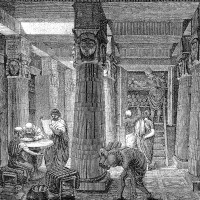
400: Origin of the bound book in the form of the ‘codex’. Sheets of parchment – or rarely papyrus – are stapled or bound between two covers.
Image source: Wikimedia / Kungl. biblioteket
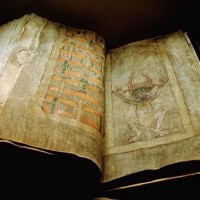
476: Fall of the Western Roman Empire, which ends with the deposition of the Western Roman Emperor Romulus Augustulus.
Image source: Wikimedia User Marcok CC BY-SA

800: Emergence of illuminated splendid volumes. In monastic scriptoria, monks and nuns write and copy books by hand. The texts are often elaborately illustrated.
Image source: Wikimedia / Cleveland Museum of Art
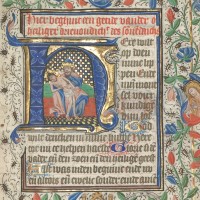
800: Charlemagne is the first Western European ruler since antiquity to attain the imperial dignity. The Frankish Empire reached its greatest expansion under him.
Image source: Wikimedia - User Beckstet
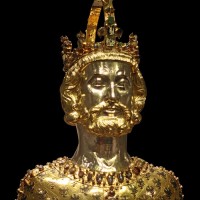
1088: Foundation of the University of Bologna. It is considered the oldest university in Europe.
Image source: Wikimedia

1200: Paper production in Europe. Paper was invented in China as early as 140 AD and reached Europe via the Indian and Arab cultures. Since it is significantly cheaper and more available than parchment, it becomes established as a writing medium from the 14th century onwards.

1450: Invention of letterpress printing with movable type. The book thus becomes a mass article and lays the foundation for the modern knowledge society.
Image source: Wikimedia
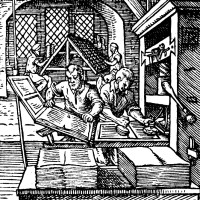
1453: Byzantium falls after barely two months of siege by the Ottoman army. End of the Eastern Roman Empire.
Image source: Wikimedia
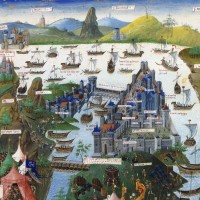
1500: Epoch of the Renaissance. Intellectual and artistic rediscovery of the ancient world. Associated with this emerges a humanistic educational program and a flowering of literature and the arts.
Image source: Wikimedia
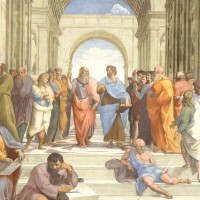
1517: Age of the Reformation, a church renewal movement. Publication of the Bible in several national languages. Printed books and pamphlets led to a strong spread of Reformation ideas.
Image source: Wikimedia

1520: Publication of the first writing master books. Using examples shown in prints, the authors demonstrate various scripts and their possible applications.
Image source: Bayerische Staatsbibliothek

1650: Early mass media. The world's first daily newspaper is published in Leipzig.
Image source: Wikimedia
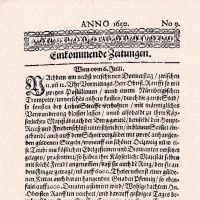
1700: Epoch of the Enlightenment. The basis for gaining knowledge here is rational thinking and empirical observations. The Enlightenment can be seen as the starting point for the following scientific revolution.
Image source: Wikimedia
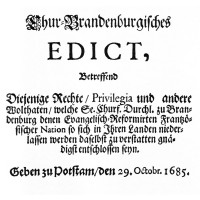
1700: Age of absolutism. The state was reduced to a single person - the ruler acting out of God-given power.
Image source: Wikimedia

1751: Publication of the ‘Encyclopédie ou Dictionnaire raisonné des sciences, des arts et des métiers’ in 35 volumes. Probably the most famous early encyclopedia, it contains contributions from 144 editors, the so-called encyclopedists.
Image source: Wikimedia
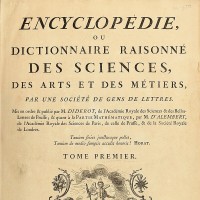
1775: Epoch of the Industrial Revolution. Technical inventions enabled very efficient machine processing and production and formed the basis for the emergence of factories. This is accompanied by profound and lasting changes in economic and social conditions.
Image source: Wikimedia

1789: French Revolution. Based on the values and ideas of the Enlightenment, civil liberties and the establishment of a republic are demanded. Radicalization leads to a regime of terror.
Image source: Wikimedia
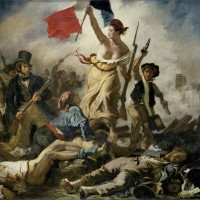
1798: Invention of the Fourdrinier paper machine. It replaces the manual scooping process with machine production. Paper thus becomes significantly cheaper and of higher quality, especially with regard to mass printed products.
Image source: Wikimedia

1800: Emergence of compulsory schooling. A general educational mandate is derived from this, leading to a significant increase in literacy.
Image source: Wikimedia
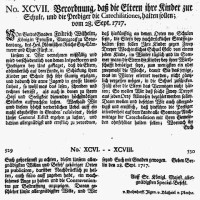
1822: Beginning of mass production of steel nibs in England. Special punching machines are used to mass-produce nibs (up to 28,000 per day) from thinly rolled steel strips. Over the course of the century, steel nibs replace the quills that had been in use until then.
Image source: Wikimedia
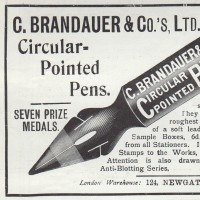
1849: Invention of the fountain pen. The fountain pen enables continuous writing by transferring ink from a reservoir to the paper by means of a metal nib.
Image source: Wikimedia
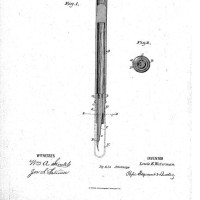
1850: Development of rotary printing. A very fast production speed can be achieved through constantly rotating printing cylinders and a continuously moving paper web. This is used above all for printing long runs.
Image source: Wikipedia
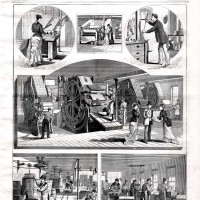
1850: Age of colonialism. Seizure of foreign territories, especially by European powers. This resulted in the subjugation, expulsion or murder of the resident population by the colonial masters. Associated with this is the spread and enforcement of the Roman alphabet in large parts of the world.
Image source: Wikimedia
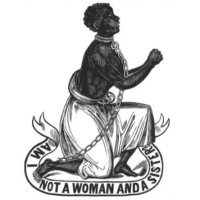
1919: Founding of the Bauhaus, an influential educational institution that strives for a unity of art and craft. In the process, a radically modern formal language is also used in type design.
Image source: Wikimedia

1945: Founding of the United Nations. In response to the wars, terrorist regimes and genocides of the first half of the 20th century, the United Nations is founded as a global, international organization for the protection of human rights and the observance of international law.
Image source: Wikimedia

1950: Emergence of phototypesetting. The individual characters are laid out on a stencil and transferred to a carrier film by means of an optical process. Reproduction templates are then created on the basis of the film.
Image source: Wikimedia

1984: Launch of the Apple Macintosh, first commercially successful computer with graphical user interface. Development of first digital fonts for desktop publishing.
Image source: Marcin Wichary CC BY 2.0
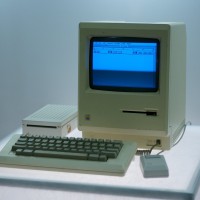
1990: Invention of the World Wide Web, a text-based information and communication system that in principle makes all the information it contains globally accessible.
Image source: Screenshot

Alte Schwabacher
The Schwabach typeface was created in the 15th century and is rounder and broader than the Gothic Textura. As an example, the small o is round on both sides, whereas in the textura it is angular on both sides. A typical letter is the small g crossed at the top. Schwabacher was superseded by Fraktur from the middle of the 16th century, but was used until the 20th century. The typeface shown here comes from the specimen book of the foundry Genzsch & Heyse and was probably cut at the end of the 19th century.
Name of Script or Typeface
Schwabacher
Alternative Names of Script or Typeface
- Alte Schwabacher
Object Name
Schriftmusterbuch der Schriftgießerei Genzsch & Heyse
Class
Bastarda
Category
Typographic
Context/Utilisation
- Typeface
- Letterpress
Year
ca.
1915
Location
Hamburg, Germany
Technology
- Bleisatz
Source
Letterform Archive
The Schwabach typeface was created in the 15th century and is rounder and broader than the Gothic Textura. As an example, the small o is round on both sides, whereas in the textura it is angular on both sides. A typical letter is the small g crossed at the top. Schwabacher was superseded by Fraktur from the middle of the 16th century, but was used until the 20th century. The typeface shown here comes from the specimen book of the foundry Genzsch & Heyse and was probably cut at the end of the 19th century.
Name of Script or Typeface
Schwabacher
Alternative Names of Script or Typeface
- Alte Schwabacher
Object Name
Schriftmusterbuch der Schriftgießerei Genzsch & Heyse
Class
Bastarda
Category
Typographic
Context/Utilisation
- Typeface
- Letterpress
Year
ca. 1915
Location
Hamburg, Germany
Technology
- Bleisatz
Source
Letterform Archive
